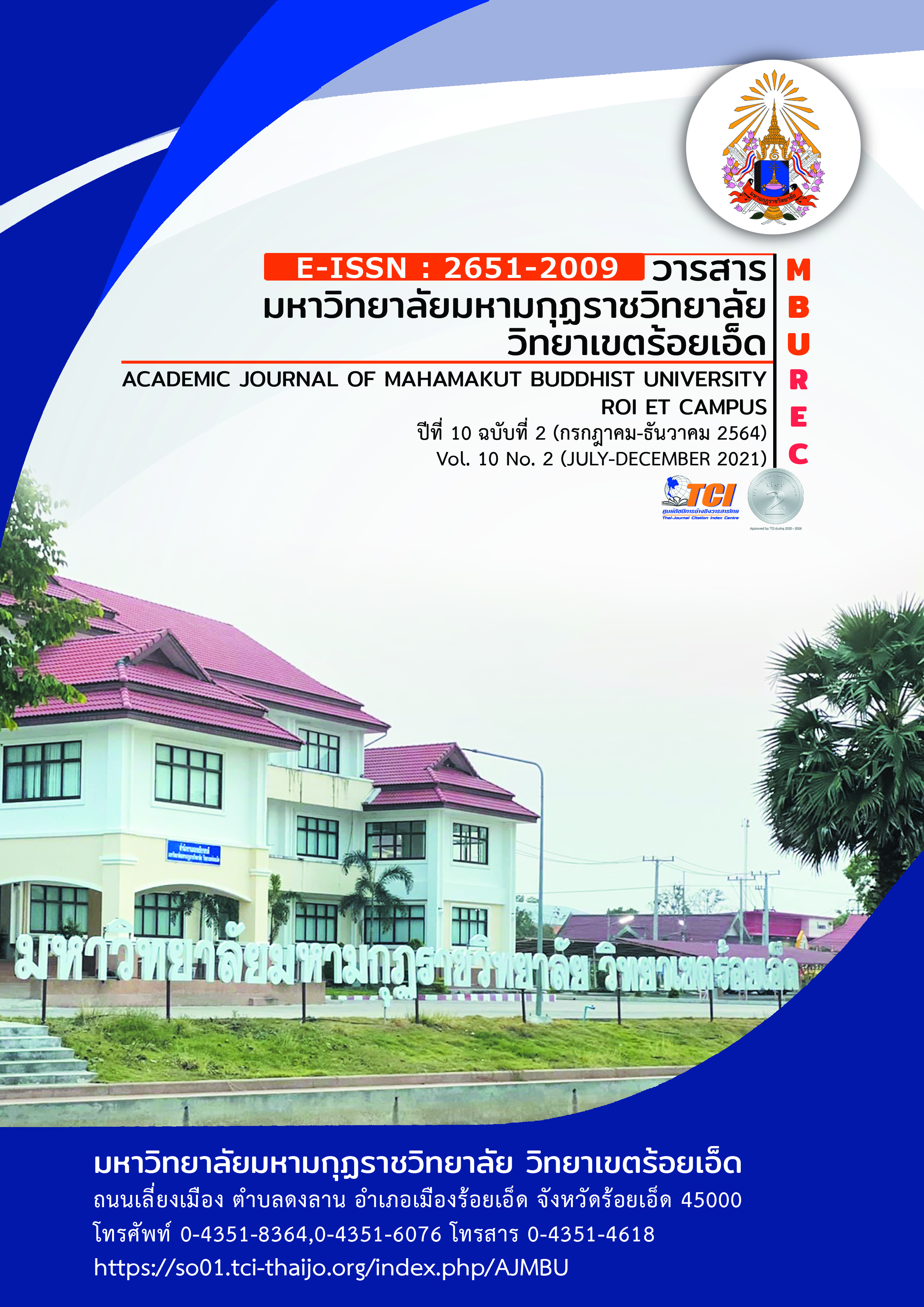The Dynamic Balance Oriented Change Management of the Public Vocational Education Schools, Pathum Thani Provice
Main Article Content
Abstract
The objectives of the research article were to determine the key components of dynamic balance oriented change management of the vocational education schools, Pathum Thani Province. The samples comprised of 210 teachers of the vocational education schools, Pathum Thani Province. The research instruments were document analysis form, the unstructured interview form, the questionnaire and the structured interview form and the check list form for confirmation of the key components. The data were analyzed by content analysis, Factor Analysis and then data synthesis. Using the connoisseurship technique in consideration of the key components of the dynamic balance oriented change management of the public vocational education schools, Pathum Thani Province. Statistics that used for data processing were Frequency, Percentage, Mean, Standard Deviation and Exploratory Factor Analysis.
The research findings revealed that: The dynamic balance oriented change management of the public vocational education schools consisted of 5 key components, namely 1)Balanced leadership cored change driven mechanism. 2) Force field analysis based stakeholder management. 3) Innovative value creation fulfilled vocational competency productivity. 4) Information technology used mediator of value created differentiation and 5) Continuous balancing of schools’ culture change.
Article Details
References
ชัยยนต์ เพาพาน. (2559). ผู้บริหารสถานศึกษายุคใหม่ในศตวรรษที่ 21. การประชุมวิชาการระดับชาติครุศาสตร์ ครั้งที่ 1 การจัดการศึกษาเพื่อพัฒนาท้องถิ่นสู่ประชาคมอาเซียน :ทิศทางใหม่ในศตวรรษที่ 21. มหาวิทยาลัยกาฬสินธุ์. 28 กรกฎาคม 2559. 301-313.
ปัณรส มาลากุล ณ อยุธยา. (2553). การบริหารการเปลี่ยนแปลง : ประเด็นยุทธศาสตร์ขององค์การภาครัฐในยุคปัจจุบัน. กรุงเทพมหานคร : คณะรัฐศาสตร์ จุฬาลงกรณ์มหาวิทยาลัย.
พฤทธิ์ เทศจีบ. (2552). การถดถอยขององค์การและแนวทางปรับตัวสู่ความเป็นเลิศ. วารสารวิชาการมหาวิทยาลัยหอการค้าไทย. 29(3). 206-218.
ลิขิต ธีรเวคิน. (2559). ความสำคัญของการรักษาดุลยภาพ. สืบค้นเมื่อ 21 มิถุนายน 2564. จาก https://siamrath.co.th/n/2892
วันทิตา โพธิสาร และคณะ. (2563). คุณลักษณะผู้บริหารสถานศึกษาอาชีวศึกษาสู่ความเป็นเลิศ.วารสารสังคมศาสตร์และมานุษยวิทยาเชิงพุทธ. 5(5). 328-345.
สมชาย เทพแสง. (2559). ภาวะผู้นำสมดุล : รูปแบบของผู้นำในคริสต์ศตวรรษที่ 21. วารสารบริหารการศึกษา มศว. 13(24). 131-140.
สมพร ปานคำ. (2563). พื้นที่นักประดิษฐ์ วิถีคิดการสร้างนวัตกรยุคดิจิทัล. วารสารวิชาการสถาบันอาชีวศึกษาภาคใต้. 5(1). 3-10.
สำนักงานคณะกรรมการพัฒนาระบบราชการ. (2552). คู่มือการบริหารการเปลี่ยนแปลงเพื่อเสริมสร้างความเป็นเลิศในการปฏิบัติราชการของหน่วยงานภาครัฐ. กรุงเทพมหานคร :สำนักงานคณะกรรมการพัฒนาระบบราชการ.
สุภัทรศักดิ์ คำสามารถ และคณะ. (2562). การเสริมสร้างสมรรถนะครูด้านเทคโนโลยีสารสนเทศทางการศึกษาในศตวรรษที่ 21. วารสารนวัตกรรมและเทคโนโลยีเพื่อการเรียนรู้. 2(1). 55-68.
สุรมน จันทร์เจริญ. (2562). ปัจจัยที่มีอิทธิพลต่อการจัดการความรู้ของสถานศึกษาด้านอาชีวศึกษา.วารสารสมาคมนักวิจัย. 24(3). 15-30.
Hoy, Wayne K. and Miskel, Cecil G. (1991). Education Administration Theory Research and Practice. 4th ed. Singapore : McGraw-Hall, Inc.
Katz, Danial and Kahn, Robert L. (1978). Organization and Management : A Systems Approach. 2nd ed. New York : McGraw–Hill Book Company.
Kotter, J. P. (2007). Leading change-Why transformation efforts fail. Harvard Business Review. 85(1). 96-103.
Laszlo, E. (1972). The Systems View of the World. New York : George Braziller.
Lewin, Kurt. (1951). Field Theory in Social Science. New York : Harper & Row.


